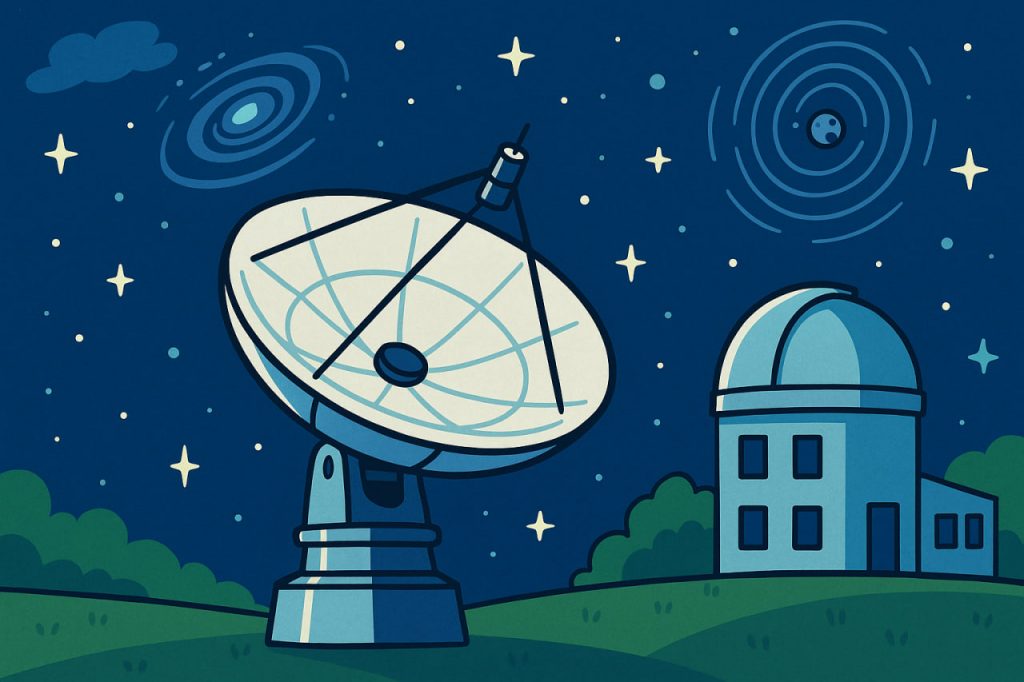While traditional telescopes capture visible light, radio astronomy uses radio waves to observe the universe. This powerful branch of astronomy allows scientists to explore distant galaxies, black holes, pulsars, and even the remnants of the Big Bang—all invisible to the naked eye.
What Is Radio Astronomy?
Radio astronomy is the study of celestial objects using radio-frequency radiation instead of visible light. Radio waves are a type of electromagnetic radiation, like light or X-rays, but with much longer wavelengths.
Scientists use large radio telescopes—dishes that can be tens or even hundreds of meters wide—to detect these signals from space. Unlike optical telescopes, they work day or night and can see through clouds, dust, and gas that block visible light.
What Can We Observe with Radio Telescopes?
Radio astronomy has revealed some of the universe’s most fascinating phenomena:
- Pulsars – Rapidly spinning neutron stars that send out beams of radio waves like cosmic lighthouses
- Quasars – Bright, energetic objects powered by black holes in distant galaxies
- Cosmic microwave background – The “echo” of the Big Bang, a faint glow from the early universe
- Molecular clouds – Birthplaces of stars, full of molecules like hydrogen, ammonia, and water
- Solar flares and planetary atmospheres in our solar system
These signals often travel millions or even billions of years before reaching Earth.
Major Achievements of Radio Astronomy
Radio astronomy has led to breakthroughs in science:
- Discovered pulsars in 1967, changing our understanding of stellar evolution
- Provided key evidence for the Big Bang theory
- Helped detect the structure of galaxies and the presence of dark matter
- Supported SETI (Search for Extraterrestrial Intelligence) efforts by scanning for alien signals
- Enabled mapping of invisible regions in the Milky Way and beyond
Many discoveries would be impossible without radio waves.
How Radio Telescopes Work
- A large dish collects faint radio waves from space
- These signals are focused onto a receiver
- The signal is amplified and converted into data
- Computers process the data to form images or frequency charts
- Multiple telescopes can be linked into arrays for greater detail (e.g., the Very Large Array or Event Horizon Telescope)
The result: we can “see” the invisible side of the universe.
Why Radio Astronomy Matters
Radio astronomy:
- Reveals parts of the cosmos invisible to optical telescopes
- Deepens our understanding of how stars and galaxies form and evolve
- Helps us study the origin and fate of the universe
- Expands the search for life beyond Earth
- Pushes the limits of engineering and computing
It’s not just about space—it drives technology, mathematics, and global collaboration.
Glossary
- Radio waves – A form of electromagnetic radiation with long wavelengths
- Pulsar – A fast-spinning neutron star that emits beams of radiation
- Quasar – A distant galaxy’s bright center, powered by a supermassive black hole
- Cosmic microwave background – Faint radiation left from the Big Bang
- Radio telescope – A device that collects radio waves from space


